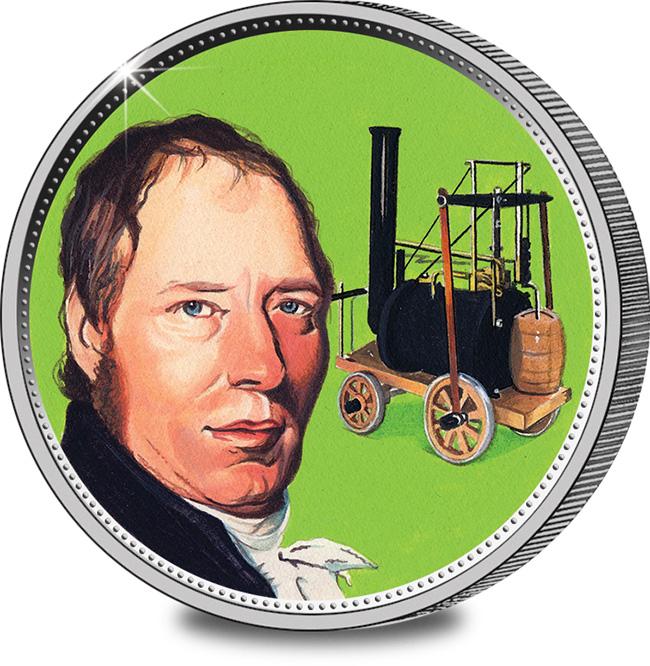
 |
Full name: Richard Trevithick
Born: 13th April 1771
Invention/Achievement: The Steam
Locamotive
Date of introduction/Achievement: 1804
(First steam powered locomotive to run on rails)
Died: 22nd April 1833
|
Richard Trevithick, the pioneer of the locomotive technology,
was born in the then thriving mining community of Cornwall and at
school was known more for his great strength and wrestling prowess
than his intellect.
He went to work with his father at the Wheal Treasury mine and
soon showed evidence of his engineering talent, making improvements
to the mine's Bull Steam Engine. He was appointed engineer at
the Ding Dong mine in Penzance, where he developed a high-pressure
steam engine. Using high-pressure steam meant that engines
could be smaller and more economical to run.
Trevithick realised that such an engine could be used to drive a
locomotive and in 1796 produced a successful working model.
In 1801 he constructed a full-size locomotive and on Christmas
Eve took seven intrepid friends on a short journey. The
locomotive comprised a horizontal cylindrical boiler with a
cylinder let into it and driven back and forth by steam pressure.
Named the "Puffing Devil", it was unable to sustain steam
pressure for long journeys.
Trevithick addressed the problem in his next locomotive "The
London Steam Carriage", which he took to London in 1803, where he
drove it from Holborn to Paddington and back. However it was
expensive to run and uncomfortable for passengers and was
abandoned.
In 1804 at the Penydarren Steel Works in Merthyr Tydfil
Trevithick ran another unnamed locomotive, the first steam
locomotive to run on rails. It carried 10 tons of iron, 70
passengers and five wagons on a nine mile journey, during which it
reached speeds of five mph. However, at seven tons it was too
heavy for the rails, which it repeatedly broke, and made only three
trips.
Another locomotive called "Catch Me Who Can" was set up in
Euston Square, London and carried passengers at one shilling (5 p)
a time, reaching speeds of 12 mph. Sadly, it too broke the
rails. After this Trevithick went to South America and for a
time made money. Local wars once forced him to return to
England, where after working for a year in Dartford, he died in
poverty in 1833.